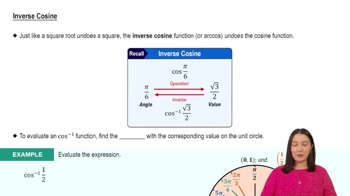Where do inverses exist? Use analytical and/or graphical methods to determine the largest possible sets of points on which the following functions have an inverse.
ƒ(x) = |2x + 1|
 Verified step by step guidance
Verified step by step guidance Verified video answer for a similar problem:
Verified video answer for a similar problem:



 4:46m
4:46mMaster Solving Exponential Equations Using Like Bases with a bite sized video explanation from Patrick
Start learning